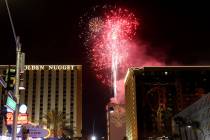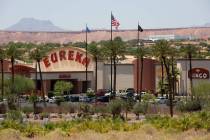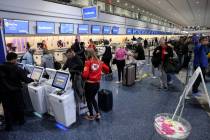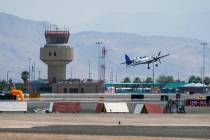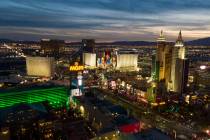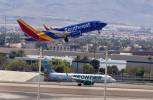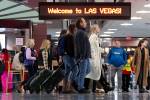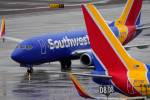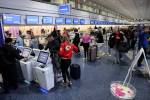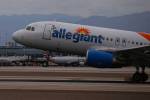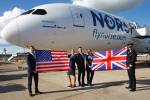Paying the tab for Terminal 3 through fees rankles Allegiant Travel Co.
Exclude Allegiant Travel Co. from those who enthusiastically welcomed McCarran International Airport's new Terminal 3.
In a presentation to investors in New York on Wednesday, a top executive for the Las Vegas-based parent company of Allegiant Air said continued local growth would come from flying larger planes and not from adding new destinations. With its unique style of flying a few nonstops a week to small cities such as Minot, N.D., and Medford, Ore., Allegiant has grown rapidly in the past few years from a bit player into McCarran's fourth-largest carrier by passenger count.
But paying for Terminal 3 through the higher landing and gate fees and other charges borne by all the airlines, with other revenue streams contributing, has caused Allegiant to pull back the throttle locally.
"That is a result primarily of the incremental cost for McCarran," said Jude Bricker, Allegiant's senior vice president of planning.
He did not specify what that would mean, but at least three routes were cut earlier this year for Allegiant and the flier's July passenger count was down 0.2 percent from the year earlier after rising 14.2 percent for the first six months of 2012.
"Living in Las Vegas, it is very frustrating for me personally because it is economic logic that the result from (higher) incremental cost on a unit basis is fewer units," he said. "All airlines are going to draw down as a result of high costs. It's a leisure market."
However, Michelle Agnew, spokeswoman for market leader Southwest Airlines, said managers in the airport affairs and network planning sections "both confirmed we have not made any changes to our routes or capacity planning due to any cost considerations."
McCarran spokesman Chris Jones said all of the airlines quickly approved the current rates earlier this year.
"As an airport operator, we must look at the big picture," he said in a statement. "The ability to welcome added capacity from various destinations in Europe, Latin America and other foreign markets while simultaneously providing a better experience for our domestic customers simply could not be overlooked."
The airport's status as a leisure destination comes into play because fares are relatively low. There are fewer business travelers on expense accounts willing to pay extra for last-minute tickets or ones that can be changed without penalty. Out of 100 destinations surveyed by the U.S. Department of Transportation, Las Vegas ranked as the fourth least expensive.
Passengers like that ranking; airlines do not. US Airways in particular dismantled the hub it once operated at McCarran primarily because of the heavy leisure load, spokeswoman Liz Landau said.
"We shifted our resources to more profitable markets," she said, without commenting on McCarran's costs.
For the fiscal year that began July 1, the bundle of airline charges assessed by McCarran will average $12.06 per passenger, a benchmark known in the industry as cost per enplanement, 160 percent higher than 2006. The fees rose to offset higher costs, notably coming with Terminal 3, passenger and flight counts still well below the prerecession peaks and sluggish growth from shops, slot machines and other businesses that use the airport.
McCarran's current cost per emplanement ranks midway among major airports after long being one of the cheaper ones. Still, aviation experts say the cost is not high enough to deter airlines from adding the flights and seats critical to the tourist industry.
But local officials have shown sensitivity toward holding down the airline costs. On Tuesday, for example, a majorty of the Clark County Commission either expressed no interest in or outright opposition to changing the McCarran name, at least partly because they did not want to stick the airlines with a tab that could run several million dollars.










